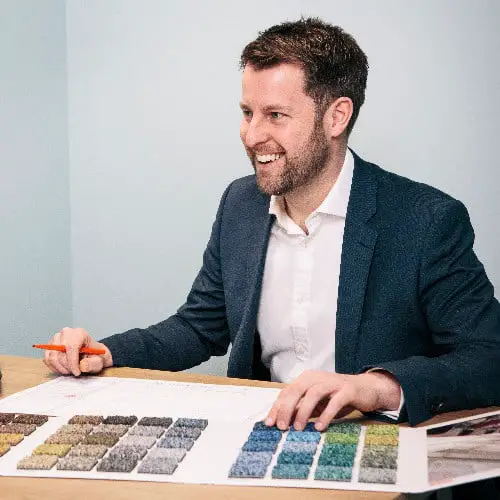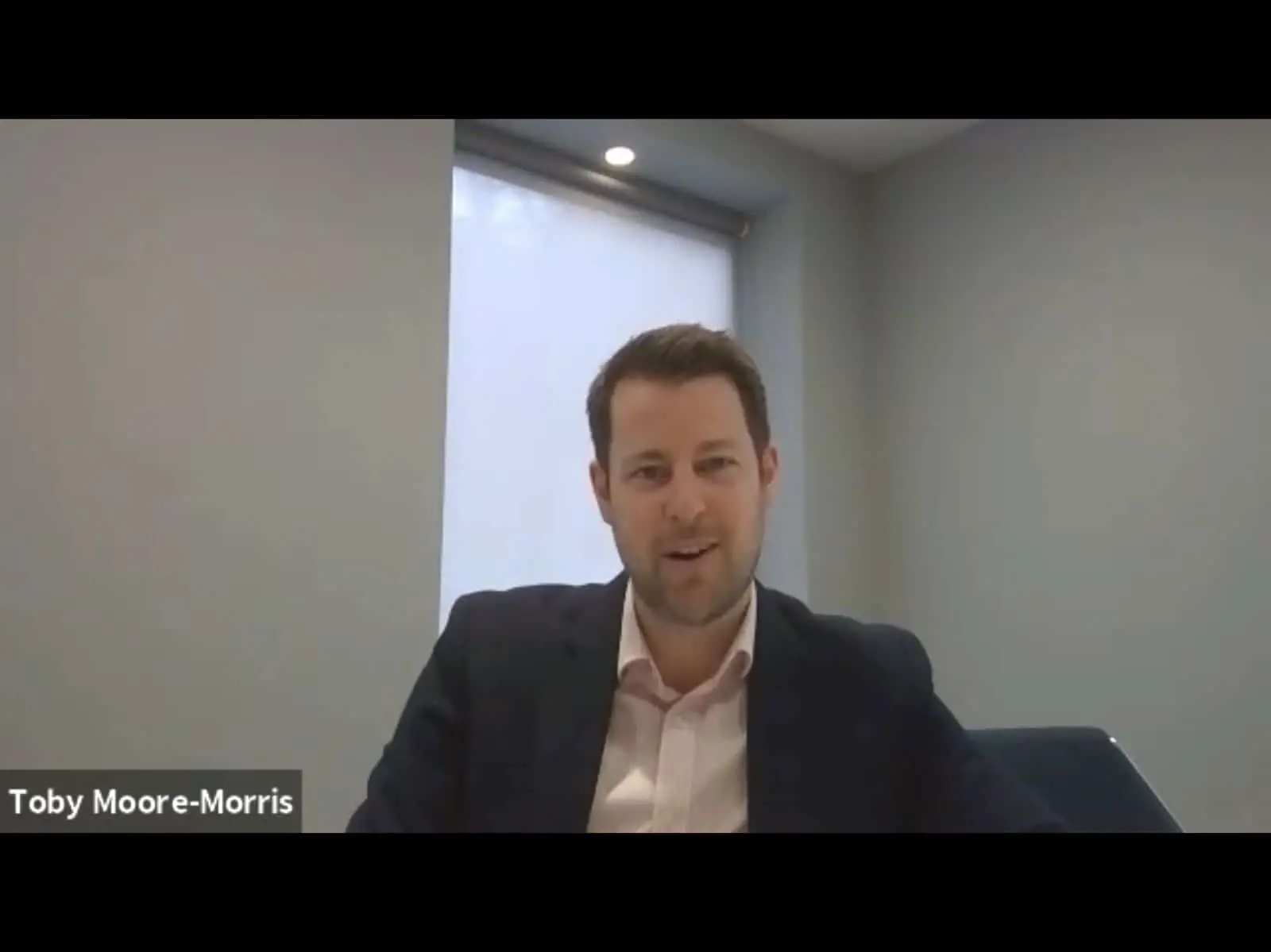In some ways, Toby Moore-Morris is a headhunter of sorts for placing clients in empty office spaces. He and his team work diligently to provide clients with a space that will work with them. Although it starts with finding the office itself, a large part of Toby’s job is to develop the space so that it works best for the clients. Whether the client is a company with 10 employees or a company with 500, Toby has found a true skill in finding and developing an office space that might be considered made to order. (Check out Toby Moore-Morris interview – HERE)
is a headhunter of sorts for placing clients in empty office spaces. He and his team work diligently to provide clients with a space that will work with them. Although it starts with finding the office itself, a large part of Toby’s job is to develop the space so that it works best for the clients. Whether the client is a company with 10 employees or a company with 500, Toby has found a true skill in finding and developing an office space that might be considered made to order. (Check out Toby Moore-Morris interview – HERE)
Taking a Risk
Toby Moore-Morris started working for ExxonMobil in his 20s, but ultimately desired a career where he was not sitting at a desk all day. When he reached the age of 30, he decided to take a leap and work for a friend’s start-up company in office design. That leap changed the course of his career and ultimately how he succeeds. It is taking that risk that taught Toby that it is important to do something that makes you happy.
The Transfer of Skills
Toby believes that while his background with ExxonMobil is far different from his current career path, he learned valuable skills in marketing himself that has carried him far in workplace strategy and design. From listening and having the desire to learn every day to working hard and collaborating, a variety of skills came with him in the industry change. One skill that is highly effective and transferable between industries is that of marketing yourself.
Marketing yourself is something that is necessary for a variety of career paths. You must market yourself in job interviews, to customers and clients, and also to coworkers in the majority of work areas. Considering that marketing yourself has to be accomplished amongst a wide array of personality types and people, it is important that you give yourself the ability to focus in on marketing to each specific group.
Toby has been successful in working with a diverse client base with an array of qualities and needs. He has worked with tech companies that want hip details in the space like bean bag chairs and lawyers that have a need for privacy. Having the ability to change the way you interact with clients based on their personalities and needs is imperative in the world of workplace strategy and office design.
Working with Diverse Clients and Needs
Every client will have a different timeline, budget, plan, and other aspects that must be handled appropriately. However, there are some things that Toby claims are important when it comes to meeting a client’s needs. Clients should always know of their timeline and budget. Most companies fail to leave themselves enough time, causing the end of the process to feel rushed. This is why Toby feels as though the process should typically begin well beyond a year prior to going live.
Establishing a budget ahead of time is imperative as well. It is hard to find the perfect space and design it without knowing how much money is available. A team should be developed that can determine what kind of finances are available and can approve financial decisions. Other team members should be involved in knowing specific factors that are desired. Planning is crucial to coming in at or under budget, on time, and achieving the desired results.
Old vs. New
In the real estate world, there is a big difference between old buildings and new ones. Although many people can appreciate the structure of old-world architecture, office design thrives in a new space. New spaces boast superior lighting, enhanced ventilation, open concepts, and added facilities that were not commonly seen a decade ago.
Lighting in new and updated buildings are best for offices because of a few reasons. It has been scientifically proven that natural light has a way of boosting both energy and motivation in employees in all industries. While the natural lighting is something that can be achieved in a space with a lot of windows, new technology has created light bulbs with the ability to mimic the appearance of natural light.
New office buildings also boast improved mechanical systems, such as air conditioning and ventilation. Today’s systems are far more efficient in getting old air out and new air in than they were 10 years ago. Because of this, employee wellbeing can reach new highs.
Another aspect to consider when comparing old and new real estate is the change in how space is used. Buildings built in past years were closed off with individual offices, rooms, and barriers between workers. Today’s office spaces have learned to make use of open offices. Most newer companies have the desire for an open space rather than blocking off all sightlines.
Newer construction also tends to have more facilities that employees (and employers) can benefit from. The presence of gyms, restaurants, business suites and meeting rooms gives employees everything that they need so they won’t have to leave the building during the workday. London’s White Collar Factory even goes so far as to have an open-air running track on the top floor. As a result, employees are more focused and produce more in a day’s work.
Toby’s Favorite Project
Learning the details of Toby’s favorite project can give you an idea of what workplace strategy and office design are really about. The client was Arthritis Research, so having handicapped accessibility was crucial. The space was designed based on the staff and visitors. This included extra benefits for the visually impaired, hearing impaired, and mobility impaired.
For the visually impaired, track lighting and non-reflective surfaces were utilized. For those that are hearing impaired, the design included hearing loops. Wheelchair accessibility was implemented for those with a mobility handicap. Sit-stand desks were also added to ensure that people could work according to their own comfort level.
Toby learned that by placing the focus on the needs of those that will be using the space, there will be a sense of success in the final product. He also learned that you can not get every single detail right the first time. Even after the project is completed and the space is being used, there may be some corrections that need to be made. It is important to get those corrections completed quickly.
Advice: Use the Resources at Hand
If you’re looking into office design or workplace strategy, be sure to do plenty of research. Use the tools that are available to you to ensure that you get the proper knowledge. Google and Pinterest should be properly utilized to find inspiration and information. You should also look into what professionals in the industry have to say. Develop contacts so that you might move forward.
Moving forward, especially with Brexit, is done best by using UK-based manufacturers and suppliers so that some risk can be removed from the situation. Toby feels as though once things work out for the best, the business will return to the norm. Handling situations that are out of your control are sometimes a waiting game, but it sometimes is important to simply move forward and do what can be done to eliminate risk.
Related Questions
What is Brexit? Brexit is the withdrawal of the UK from the European Union. It is a portmanteau of the words “British” and “exit.”
What does workplace strategy entail? Workplace strategy involves aligning specifics of the company’s work needs with the environment of the office space.
Join the Open Sourced Workplace Community – It’s FRE
Service Providrs – JOIN HERE
Workplace Professionals – JOIN HERE


